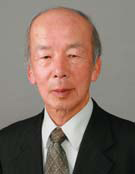
We are hearing a lot of good news about space projects recently. Many in Japan were excited about the remarkable achievement of the Hayabusa spacecraft and its successful return to Earth in June from its landing spot on the small asteroid, Itokawa. Even with modern technology, it is a historic achievement to rendezvous with a hundreds meter small asteroid and send pictures of it back to Earth. Hayabusa successfully returned the capsule, which showed its advanced control technology and recovery techniques to the world.
The capsule, which traveled six billion kilometers to and from Itokawa in seven years was shown to the public at the Jaxa Institute of Space and Astronautical Science in Sagamihara and Tsukuba Space Center. Record crowds queuing for hours to get a glimpse of the capsule said it was worth the wait; seeing the capsule, which had been on such an adventure, was a very moving experience.
One of the component technologies that played a role in the spacecraft’s success was the “ion engine.” NEC, the engine developer, is reportedly entering the global market by appealing its performance and reliability demonstrated in space. Considerable demand is expected since it is a key component for most geostationary communication satellites. I hope NEC enjoys further business success; they dominate the market for the attitude sensor guided by infrared rays from Earth that is used in communication satellites. As I’m involved in editing a book by Prof. Kuninaka, who was responsible for developing the ion engine used in Hayabusa, I hope young researchers, in particular, will pay more attention to this area.
Yoshiaki Ohkami
Director, SDM Research Institute
Dean, Graduate School of System Design and Management
